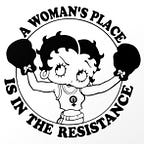Photographic Justice: The Corky Lee Story (2022), by Jennifer Takaki
Because of the traditional media and especially social media, we know that February is Black History Month and March is Women’s History Month. May, on the other hand, is Asian American and Pacific Islander Heritage Month, a date that only recently started being widely celebrated outside these tightly-knit AAPI communities. We celebrate AAPI Heritage Month by reviewing a documentary about an icon of the community, one who shone a light on his brothers like no one had done before.
“Pics or it didn’t happen” seemed to be the sentence that defined what Corky Lee did. He photographed protests, shows, parties, marches. Corky defined himself as “an ABC (American born Chinese) from NYC” who took a little over 800,000 protographs of Asian Americans in a career that spanned five decades. He wanted to be remembered not for who he was, but for the photographs he took — and this is exactly what is happening.
Bullied by his schoolmates, it was during childhood, through a photo of the building of a railroad in Utah, that Corky found out what historic erasure is. Like the superheroes from the comic books he read, now he knew he had a mission. He didn’t vow as a child to combat the historic erasure of Asian people in America, but it was this that he did as an adult. Leaving college with a degree in American History, it was in Chinatown that he got involved with the Asian American Rights Movement and took his first photos in demonstrations from the group. Corky and the movement were put in the spotlight when one of his protos was published in the front page of “The New York Post” in the mid-1970s.
The Asian American community was mostly against the Vietnam War: them being drafted meaned that Asians were sent to kill Asians. This is perfectly illustrated by a story told by Corky’s brother John about their other brother Jimmy: poor Jimmy was asked to go to the center of the platoon only for their superior to say “this is how the enemy looks like”. Another story of prejudice is told through one of Corky’s photographies: it’s an image depicting the garden cultivated by an old lady, with the peculiarity that all the vases are toilets owned by Chinese Americans that were discarded once white people bought their houses and felt disgusted to have to use the same toilets.
There are, in the documentary, some animated moments: when Corky remembers his childhood or why he got the nickname “Corkypedia”. For those who might find a romantic take from the movie and be inspired to become photographers, Corky has advice: prepare to make sacrifices in several areas of your life. His photos were mostly published in local media, magazines and newspapers of restricted groups, with low circulation. But, no matter what, he kept shooting.
And here lies a surprise: Corky Lee didn’t make a living with his photographs. He was a freelancer, he mentions this, but his formal job was as an overseer of ethnical newspapers at a printing company called Expedi. Pitching a book proposal also turns out to be difficult and Corky decides to self-publish the book.
Corky tells us that, after 9/11, the number of hate crimes against Asian Americans increased, especially among those who were Muslim or another religious minority, like the Sikhs. It was also after the terrorist attack that Corky’s work started being more recognized, through exhibits and awards. Years later, hate crimes against Asians would spike once more, this time because of the Coronavirus pandemic. Corky Lee had time to register this happening, before tragically succumbing to the virus in 2021, at age 73.
Filmmaker Jennifer Takaki paints a lovely portrayal of someone she was lucky enough to call a friend. She had been following Corky Lee around since 2003 and, through Corky, made lots of friends and learned plenty. In Jennifer’s own words:
“On a personal level, I miss him dearly. Corky widened the lens in which I view theworld and for that, I am forever appreciative. My hope for the film is for viewers to learn about the importance of AAPI history through CorkyLee’s photography and ultimately instill confidence, pride and a sense of belonging to all.”
When we talk about Asians, people often think about Japanese or Chinese folks. But there are more: Koreans, Cambodians, Indians, Filipinos… the list goes on. Corky sought a balance in the groups he photographed, going to several festivals around the year — not only the most famous, the Chinese New Year — and was recognized by his efforts. His is a story of inspiration, insistence and bravery. Corky Lee will live through the photos he took — his last wish was granted.
